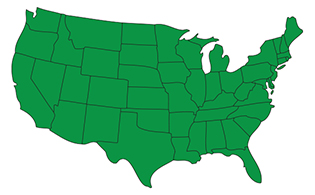
Big-Eyed Bug
Geocoridae spp.
The Big-Eyed Bug is actually a beneficial lawn insect that is found in most types of grass across North America. This oddly named bug, scientifically called Geocoridae spp., is a predator of many turf-damaging insects.
Identify

Crown & Thatch
An adult Big-Eyed Bug features a flattened, somewhat oval-shaped body with a head that is broader than it is long. The key identifying feature of this lawn insect are its namesake large eyes. The nymphs resemble those of Chinch Bugs, except Big-Eyed Bug nymphs have bigger eyes and lack the distinct orange color and white stripe of Chinch Bug nymphs. Big-Eyed Bugs are not lawn-damaging insects—quite the opposite. In fact, Big-Eyed Bugs are predators of the Chinch Bug, Greenbug, Mite and many other lawn-destroying insects, quickly running across yards in search of other insects. Populations of this lawn insect can become high in areas where severe infestations of Chinch Bugs are present. It can be easy to confuse a Chinch Bug infestation from a large Big-Eyed Bug population, but only one of these is harmful for your lawn.
Life Cycle
This beneficial little lawn insect overwinters as an adult, becoming active in spring when daytime temperatures rise to at least 75°F. An entire Big-Eyed Bug life cycle can take five to six weeks to complete during favorable conditions. This slightly longer life cycle than some lawn pests results in several overlapping generations during the growing season. Different species of Big-Eyed Bugs may also have different life cycles.

Control
Due to its beneficial, predatory nature in hunting down lawn-damaging insects, TruGreen® does not recommend prevention or control of the Big-Eyed Bug. For other lawn pests, proper mowing and watering techniques can help foster a healthy lawn that's more tolerant to attacks—plus you'll get a lawn you'll want to live on in the process.







